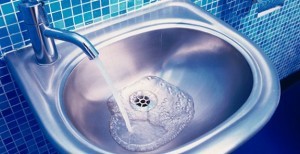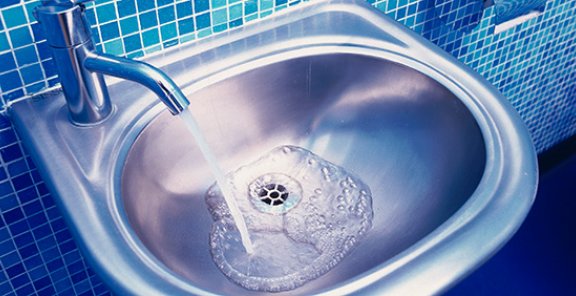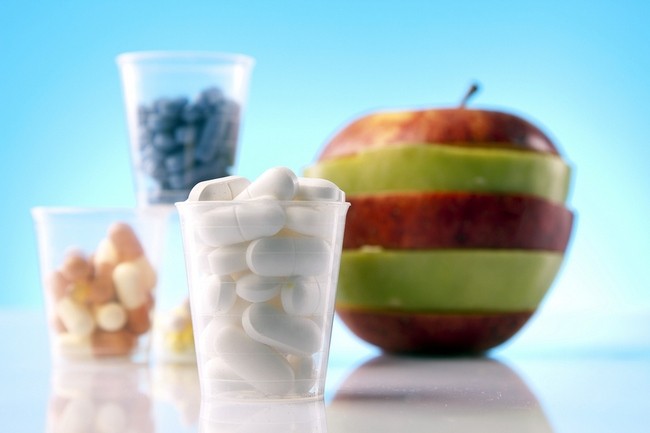More Posts
- Health Problems: Male Infertility Linked To Hypertension
- Metabolic Disease: Artificial Sweeteners Trigger Glucose Intolerance
- Receives Bomb Threats and Cancels Tour: Doctor Educating Public On Vaccines
- Food Allergies Increase Discovered
- EU To Dump U.S. And Join Russia: American Food Supply Listed As Reason

According to the World Health Organization, 4.3 million people die every year from drinking contaminated water, mostly in underdeveloped countries where people drink water that has not been treated. More than 900,000 people become ill, and about 900 die each year in the U.S. alone from ingesting water contaminated by various microorganisms. Hence, awareness of the health effects from drinking contaminated water is of vital importance.
Many of us have grown up drinking tap water without thinking twice about it. The availability of potable drinking water is a cornerstone of developed countries. Many developing, or third-world, countries often provide inadequate access to drinkable water, and the water from the tap is frequently contaminated with pathogens, suspended solids, toxins and/or disease-carrying organisms.
Unfortunately, the use of chemical agents in developed countries to make water potable has started to raise concern throughout communities about the safety of seemingly innocuous tap water.
The development of urban areas has made tap water provided by municipal water systems one of the most common ways of delivering water to people. Groundwater systems are also quite popular; for example, in the US, groundwater is a source of drinking water for nearly 50% of the population. Some are lucky to still have access to untainted natural water sources, …
Plastic bottles are a less than optimal idea too. They can contain the potentially hazardous chemical BPA.
And the devastating environmental impact is staggering.
Distilled Water – Use with caution… Long-term use can invite health problems, because its minerals are evaporated out. So to try to maintain mineral balance, it sucks minerals out of your body.
What’s worse, the contaminants in the water are more concentrated in the finished distilled water. You can just imagine what that does to your health…
Alkaline Water – Although there is some controversy on this, I and most experts believe that this water should be used for short-term detoxification only (1-2 weeks max).
Additionally the alkalinization process does NOT filter the water so you need to carefully evaluate the water filter for the specific alkaline water unit it’s using.
Vitamin Waters – Don’t be fooled… Vitamin waters contain high fructose corn syrup (HFCS), artificial colors, additives, preservatives, and caffeine. Even worse… they use distilled water to produce these products – which as you just read, is one of the worst types of water you can consume.
Other options also include:
Fresh Spring Water – There is a resource called www.findaspring.com, which allows you to locate natural springs close to where you live if you want to have a try at collecting your own spring water. Of course, this will not be an option for everyone, and there is some time and effort associated with collecting spring water.
Well Water – If you don’t already have one, you could construct a water well on your property, given that there is an adequate ground water source and where overly dry climate conditions won’t result in water shortages. Unfortunately, most wells can be easily contaminated, and the water may need to be treated or softened.
Tap Water – Supplied through the municipal water system, tap water is the most common option for drinking water for most people, especially those living in cities and large metropolitan areas. Access to tap water is easy and quick, yet, concerns about fluoridation are becoming more prevalent. Additionally, tap water is treated with chlorine, which is one of the main reasons many people want to filter tap water before they ingest it or use it on the body.
Water Filtration Options for Your HomeThere are many options in terms of home water filtration, and, ideally, you want a system that uses a variety of methods to remove organic and inorganic contaminants, as well as sediment and metals. Home water filtration options consist of a few categories:
Pitcher/Carafe Filter
These types of filters are some of the least expensive, at least at the onset, because they are only about $10-$40 for the pitcher. Refill cartridges cost about $5-$15, and these need to be replaced about every 30-40 gallons. So although the initial cost is low, the on-going cost of about 12-20 cents per gallon can make these filters the most costly long term.Reverse Osmosis Filter
RO filters are effective in removing contaminants in your water, including fluoride, lead, mercury, cysts, chlorine and more, yet they also remove natural minerals. As mentioned in the section on Distilled Water above, this may create a mineral imbalance in the body. So if you choose this type of system, you will need to add essential minerals back into your water after it’s filtered. Some RO water filtration systems automatically address this issue.Granular Carbon and Carbon Block Filters
Water filtration using carbon is most common for counter-top and under-the-counter filters. The EPA considers carbon filters to be the best available technologyfor the removal of organic chemicals such as herbicides and industrial chemicals such as chlorine. These filters remove contaminants through adsorption, where the contaminants bond to the surface of the filter media.
Ion Exchange Filter
These types of filters work by removing dissolved salts in the water by exchanging natural-forming ions in the water with their own ions. Ion exchange filters are usually combined with carbon adsorption or RO filtration, because on their own they do not effectively remove organics and microorganisms.Distillation Filter
A distillation filter, when combined with carbon adsorption, is one of the most effective methods for obtaining 99.9% contaminate-free water. The distillation process boils the water to create steam, which then cools and condenses to form mineral-free water. Similar to the RO filtration method, distillation removes all healthy minerals as well as harmful contaminants.
Are You Ready to Start Drinking Cleaner Water?If you choose to purchase a water filter for you home, not only will you be choosing which technology to use, but you will also have options on where the water filter should reside. There are options for under-the-sink and counter-top or faucet top, which sometimes require more involved installation, versus water cooler style filters, which can be much easier to set up and more portable but take up more space. Other options, especially great for traveling and camping, or for storing as part of your emergency kit, include small water filtration bottles, microfilters, and bottle-top filters. The effectiveness in removing chemicals and pollutants, as well as the life-time of filter cartridges, will vary depending on the brand of filter you purchase. Don’t be turned away from an expensive filter but consider their lifetime and effectiveness before making your decision.
Tempting as it may be, surface water supply sources (lakes, rivers, and reservoirs) are untreated and there is a great risk of contamination due to cysts spread through animal feces. So the take-home message is to not drink water coming from these sources!
To those who have suppressed immune systems (or those of you who want to be extra safe), it is recommended by the Centers for Disease Control and the Environmental Protection Agency to either boil all tap water, invest in certain bottled water, or purchase a filter that is certified by water testing concerns to remove cysts.
Please Read this Article at NaturalBlaze.com





Leave a Reply